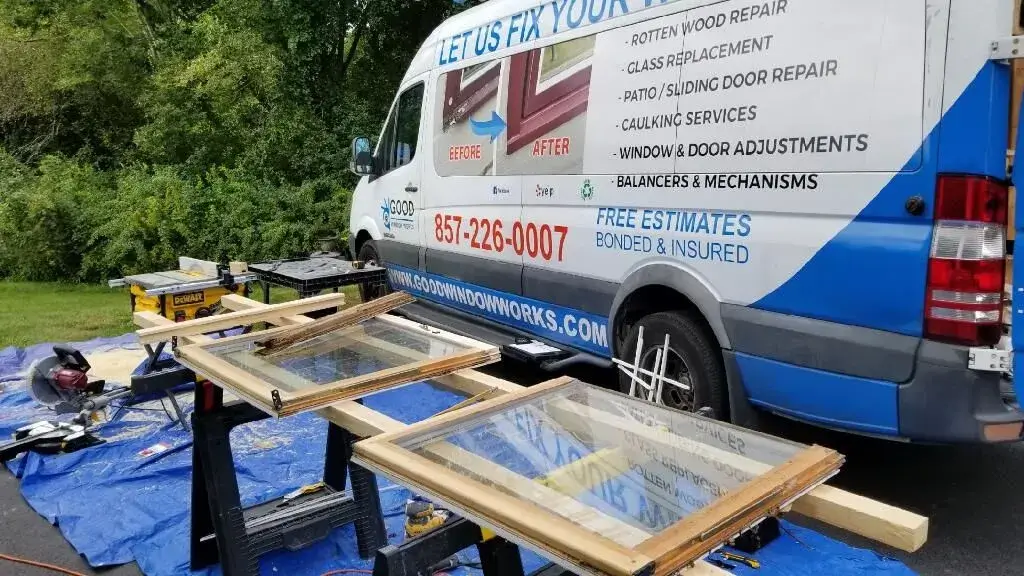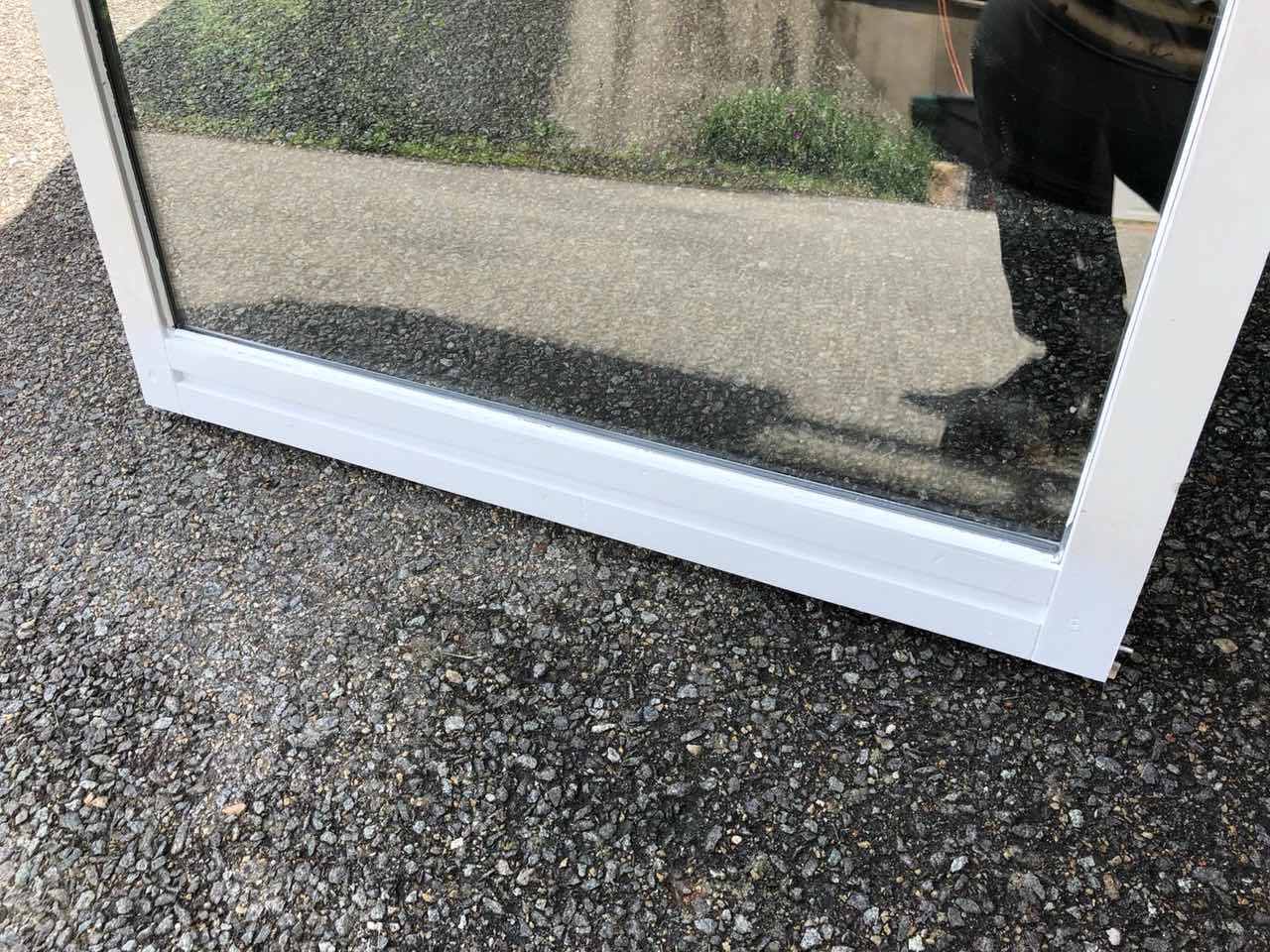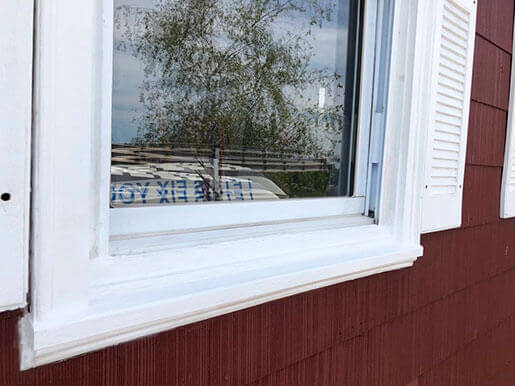TO RESTORE OR NOT TO RESTORE: HISTORIC WOOD WINDOWS
Over the past several decades, replacement windows have been heavily promoted to architects and homeowners, leading many to consider window replacement as the first step in renovating historic buildings.
Over the past several decades, replacement windows have been heavily promoted to architects and homeowners, leading many to consider window replacement as the first step in renovating historic buildings. However, only about 20% of a building’s energy is lost through windows, with the rest being lost through floors, walls, and roofs. It’s important to explore various building envelope renovation methods and evaluate the pros and cons of each approach. When it comes to historic wood windows, there are three primary options: replacement, re-glazing with insulated glazing units, and window restoration. Each option has its own aesthetic, cost, and energy implications.
In the case of window replacement, the standard procedure involves keeping the window frame intact and only replacing the sash. This is often done regardless of the existing historic window’s condition. However, there are several drawbacks to this strategy. First, most air leakage in windows occurs where the sash meets the frame. Replacing the sash does not address this issue, which could be more economically resolved by installing metal-spring weather-stripping and nylon pile on the existing window. Additionally, replacement sash are typically made from new-growth lumber, which is softer and more susceptible to rot than old-growth woods. Often, the wood is finger-jointed and hidden behind vinyl or aluminum cladding, which can trap moisture and cause further problems.
Insulated glass units in replacement windows also present issues. Their seals frequently fail, allowing moisture to enter between the units and causing the glass to fog. The insulating gas between the units, usually argon, also leaks out, causing the window to lose its insulating properties. As a result, the replacement window performs worse than the original window it replaced. The average lifespan of a replacement window is about 20 years, while a properly maintained historic wood window has an indefinite lifespan since it consists of individual parts that can be repaired or partially replaced, rather than a complete window sash replacement.
The aesthetic of a replacement window can never match that of the historic window it replaces. The unique patina of age, individual glass light inconsistencies, and the window’s character are lost when it is removed from a building. Replacement windows have a uniform, hard-edged, flat appearance that is easily noticeable and detracts from a historic building’s integrity.
Restoration before and after: the character is not lost!
Studies have shown that the economics of window replacement favor restoration over replacement. The energy savings payback can never offset the cost of the replacement window, especially when considering the relatively short lifespan of replacement windows.
The second option, reglazing historic sash with insulated glass units, also has its share of problems. When a window is reglazed in this manner, the existing muntins, stiles, and rails of the sash are routed out to accommodate the insulated glass unit’s increased thickness. This reduces the shadow lines of the muntins, alters the transparency of the individual lights, and eliminates the unique irregularities of historic glazing. Moreover, many historic sash become weakened and damaged by the added weight of the insulated glass units when routed out this way. The original sash weights, designed to lift a specific weight of sash, are often unable to handle the increased load. As a result, spring-loaded sash weights are typically retrofitted.
The cost of reglazing historic windows with insulated glass units is comparable to replacement sash and has a similar payback period. It also fails to recoup the cost of the retrofitted historic sash through energy savings.
The third option is window restoration. Historic windows are considered significant features of a building because they represent the original design intent, period or regional style, and exceptional craftsmanship.
Restoring historic wood windows offers many economic and environmental benefits. While the cost of window restoration is often similar to window replacement, the outcome is a long-lasting window that will endure indefinitely with proper maintenance, whereas most replacement windows have a lifespan of about 20 years. If a restored window is weather-stripped, the frame is adequately caulked, and an exterior storm sash is installed, its energy consumption is virtually identical to that of a replacement window.
Correct wood window restoration technique
The labor and money spent on window restoration contribute to the local economy rather than being used in a distant location where windows are manufactured and require transportation to the site. An existing window has embodied energy, which is lost when it is replaced. It’s essential to remember that the saying “the greenest building is the one already built” applies to windows as well. Repairing a historic window is the most environmentally responsible choice. It reduces the carbon footprint and waste of the window upgrade process and recycles old growth wood, which is no longer available.
For all these reasons, except in cases where windows have deteriorated beyond repair, window restoration is the most logical choice when dealing with historic wood windows. It’s the best decision economically, environmentally, and aesthetically.
Choose Professional Window Repair With GoodWindowWorks.com
The window repair experts at GoodWindowWorks.com take pride in providing exceptional service and top-quality workmanship. We guarantee customer satisfaction by completing your window repairs with the utmost care and attention to detail, ensuring your home remains protected from the elements.
Before embarking on a DIY window repair project, consider the benefits of trusting the professionals at GoodWindowWorks.com with your home’s window needs. Contact us today, and let our experienced team help you restore your windows to their original beauty and functionality while offering you peace of mind and a stress-free experience.
Other news Other news
Contacts Contacts
- Call us
Call to request an estimate or for general questions about our services.
978-201-4996
- Write us
Write to request an estimate or for general questions about our services.
goodwindowrepair@gmail.com
Fill out the form and we will call you back
Your message has been sent. You will be contacted during business hours during the day
To gallery





![[Rotten Wood Window Repair]](/storage/659/9c9/784/6599c97841fe3625664528.png)

![[Historic Window] Restoration](/storage/659/9c9/043/6599c90431843193049277.png)
![[Insect screen] installation](/storage/659/9c8/8f1/6599c88f12962941029123.png)
![Window Hardware and [Mechanisms Repair]](/storage/659/9c8/5d2/6599c85d29af5427365426.png)